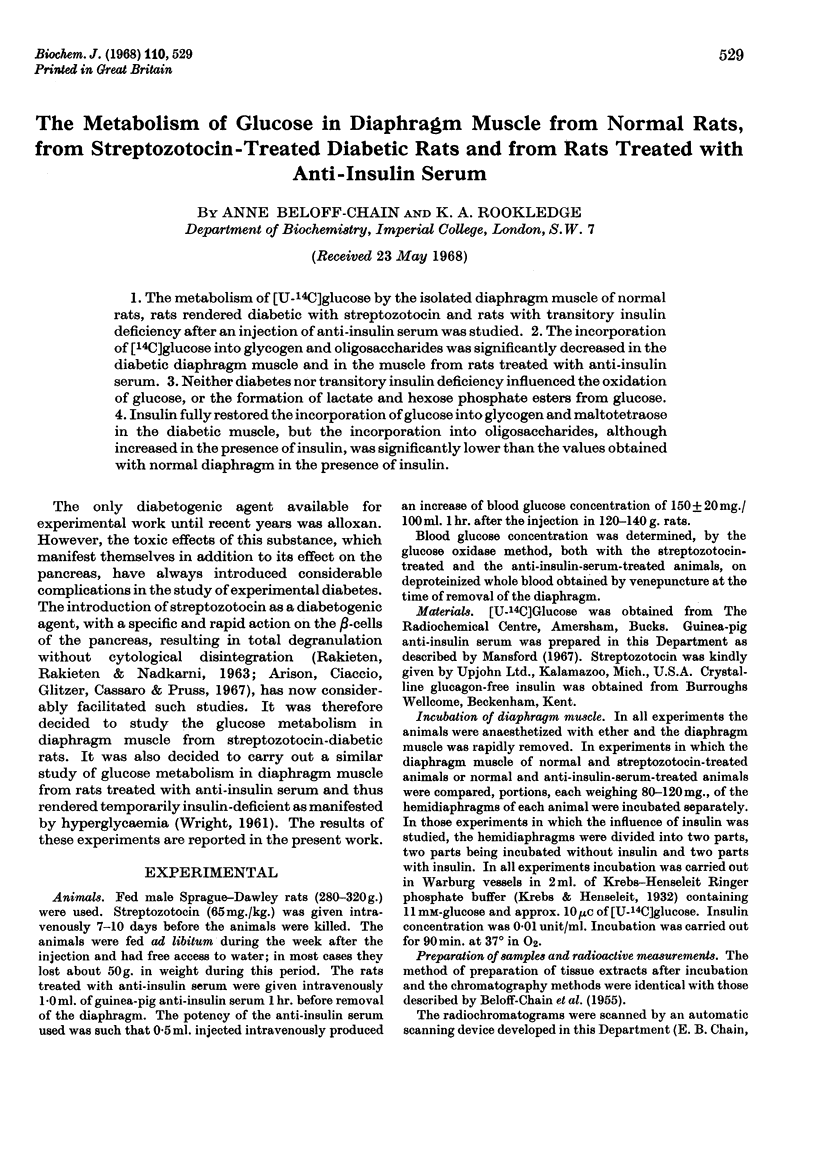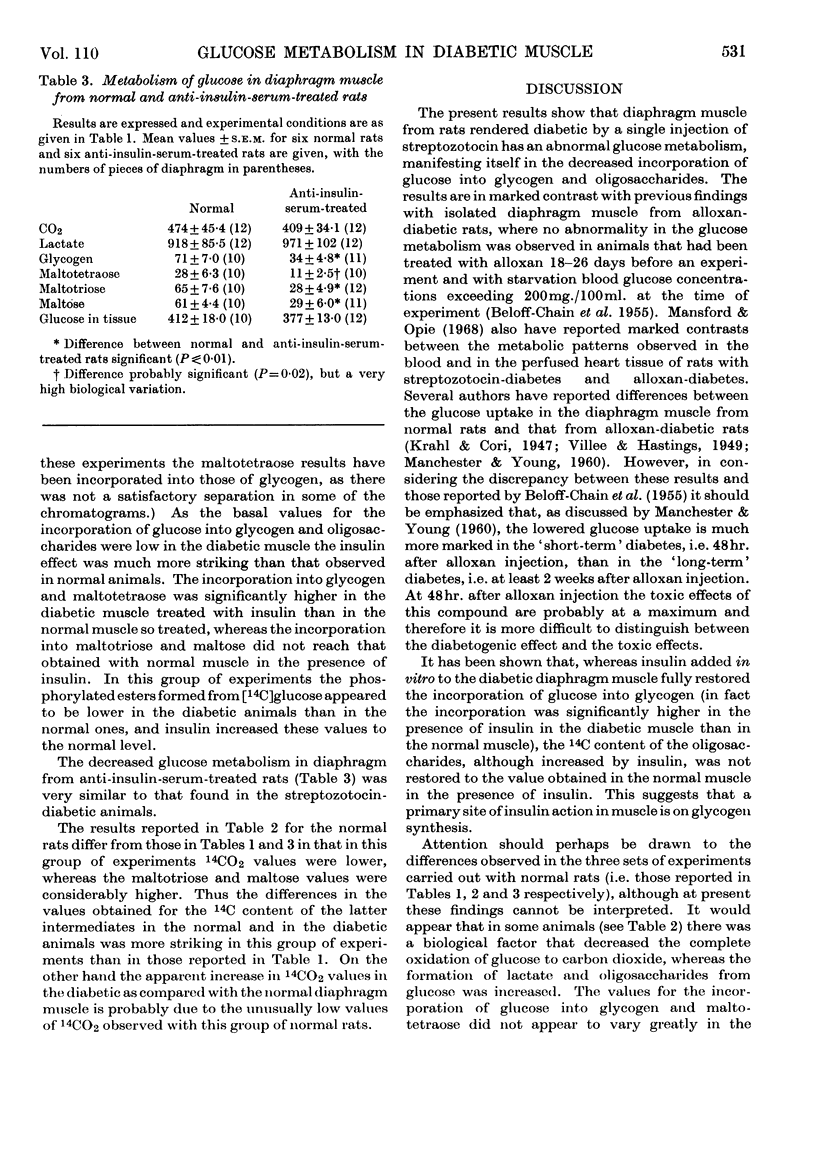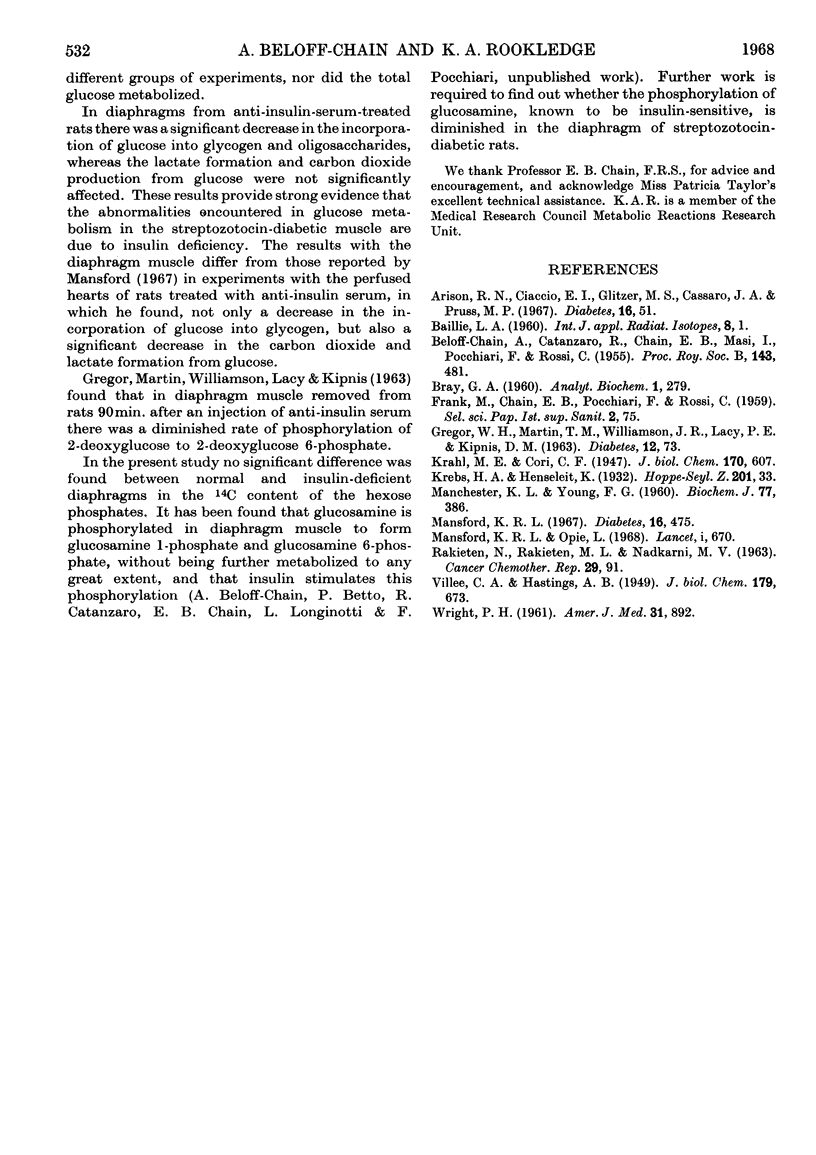Abstract
1. The metabolism of [U-14C]glucose by the isolated diaphragm muscle of normal rats, rats rendered diabetic with streptozotocin and rats with transitory insulin deficiency after an injection of anti-insulin serum was studied. 2. The incorporation of [14C]glucose into glycogen and oligosaccharides was significantly decreased in the diabetic diaphragm muscle and in the muscle from rats treated with anti-insulin serum. 3. Neither diabetes nor transitory insulin deficiency influenced the oxidation of glucose, or the formation of lactate and hexose phosphate esters from glucose. 4. Insulin fully restored the incorporation of glucose into glycogen and maltotetraose in the diabetic muscle, but the incorporation into oligosaccharides, although increased in the presence of insulin, was significantly lower than the values obtained with normal diaphragm in the presence of insulin.
Full text
PDF



Selected References
These references are in PubMed. This may not be the complete list of references from this article.
- Arison R. N., Ciaccio E. I., Glitzer M. S., Cassaro J. A., Pruss M. P. Light and electron microscopy of lesions in rats rendered diabetic with streptozotocin. Diabetes. 1967 Jan;16(1):51–56. doi: 10.2337/diab.16.1.51. [DOI] [PubMed] [Google Scholar]
- BELOFF-CHAIN A., CATANZARO R., CHAIN E. B., MASI I., POCCHIARI F., ROSSI C. The influence of insulin on carbohydrate metabolism in the isolated diaphragm muscle of normal and alloxan diabetic rats. Proc R Soc Lond B Biol Sci. 1955 May 17;143(913):481–503. doi: 10.1098/rspb.1955.0025. [DOI] [PubMed] [Google Scholar]
- GREGOR W. H., MARTIN J. M., WILLIAMSON J. R., LACY P. E., KIPNIS D. M. A study of the diabetic syndrome produced in rats by anti-insulin serum. Diabetes. 1963 Jan-Feb;12:73–81. doi: 10.2337/diab.12.1.73. [DOI] [PubMed] [Google Scholar]
- MANCHESTER K. L., YOUNG F. G. The influence of the induction of alloxan-diabetes on the incorportion of amino acids into protein of rat diaphragm. Biochem J. 1960 Nov;77:386–394. doi: 10.1042/bj0770386. [DOI] [PMC free article] [PubMed] [Google Scholar]
- Mansford K. R. Influence of anti-insulin serum on glucose metabolism. II. In the perfused heart. Diabetes. 1967 Jul;16(7):475–477. doi: 10.2337/diab.16.7.475. [DOI] [PubMed] [Google Scholar]
- Mansford K. R., Opie L. Comparison of metabolic abnormalities in diabetes mellitus induced by streptozotocin or by alloxan. Lancet. 1968 Mar 30;1(7544):670–671. doi: 10.1016/s0140-6736(68)92103-x. [DOI] [PubMed] [Google Scholar]
- RAKIETEN N., RAKIETEN M. L., NADKARNI M. R. Studies on the diabetogenic action of streptozotocin (NSC-37917). Cancer Chemother Rep. 1963 May;29:91–98. [PubMed] [Google Scholar]
- WRIGHT P. H. The production of experimental diabetes by means of insulin antibodies. Am J Med. 1961 Dec;31:892–900. doi: 10.1016/0002-9343(61)90031-6. [DOI] [PubMed] [Google Scholar]


